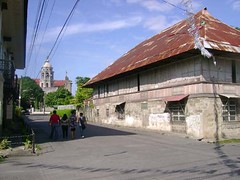 [/caption]
[/caption]Another old town with its historic remnants slowly vanishing is Sta. Rosa, a once agricultural settlement named by its Dominican originators after the blessed lady saint from Lima. The fairly new city is now known for its classy villages and big malls. From Binan, one could hardly notice the old houses that rest scattered in its major roads leading to the town center.
The church has been frequently repaired and renovated due to damage cause by both nature and man, but the core structure remains, the interior retained its aged personality. The spacious top space, its remarkable center dome, the magnificent retablo and the ornamented walls painted with holy imagery is comparable to that of San Agustin in Intramuros. A new bellfry, the old one, a pointed structure that had been in steady repair for decades, was finally replaced by a concrete construction using modern day materials. The bells were still the originals, the latest belfry is towering and impressive, it came out well. There were several markers commemorating the visits of the Peruvian Ambassadors, who had been offered monetary support to the town. The Peruvian government has donated a life-size image of Sta. Rosa de Lima.
Inside the church, there were still quite a few headstones that adorned the side walls, belonging to the important citizens of the old town. Most of these pioneering men and women had been given the honor of being buried within their beloved Iglesia, as proof of their significant contributions to their community. Within the environs of the church, which has always been the core of a Spanish town's blueprint, are the propertied and cultured families with their splendid residences.
[caption id="" align="alignnone" width="257" caption="Sta Rosa de Lima"]
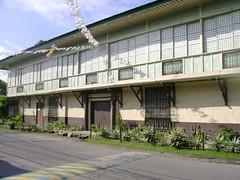 Casa de Tantionco
Casa de Tantionco 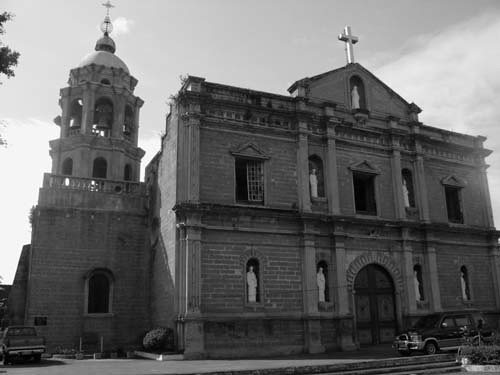 [/caption]Inside the Perla residence I was immediately greeted by a weathered statuette of a little girl holding a basket, said to be that of an aborigine, gathering fruits in the forest. These beautiful statuettes once adorned the attractive gardens of each home, they were elegant pieces and was said to have been a symbol of wealth and influence.
[/caption]Inside the Perla residence I was immediately greeted by a weathered statuette of a little girl holding a basket, said to be that of an aborigine, gathering fruits in the forest. These beautiful statuettes once adorned the attractive gardens of each home, they were elegant pieces and was said to have been a symbol of wealth and influence. [/caption]
[/caption]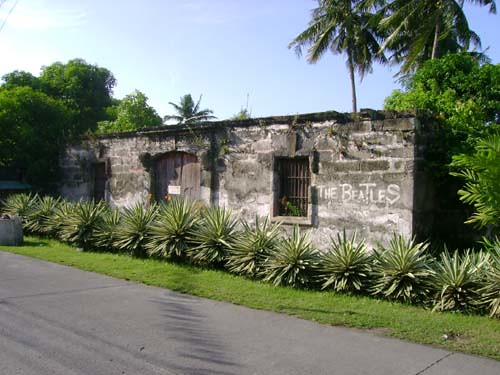 [/caption]
[/caption]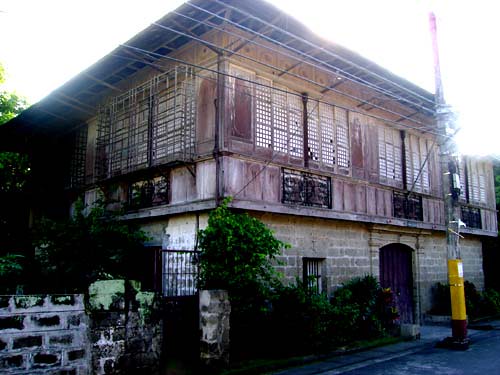 [/caption]
[/caption]


